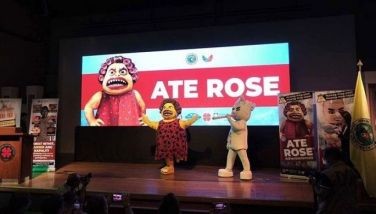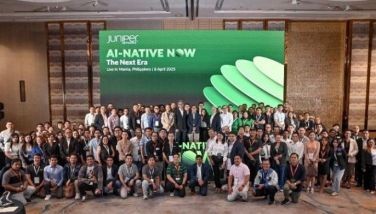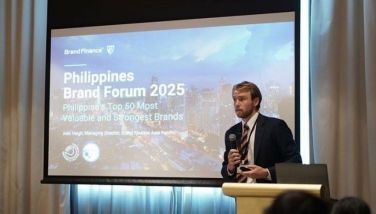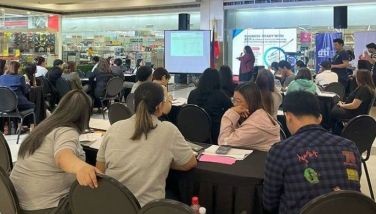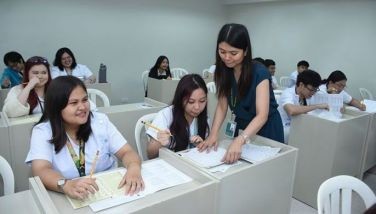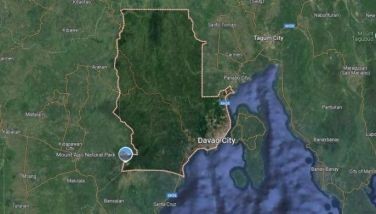ARMM benefits from UN food program, more foreign grants
July 23, 2006 | 12:00am
COTABATO CITY — Residents of the Autonomous Region in Muslim Mindanao (ARMM) are up for "better days" with a special package from the World Food Program (WFP) and a separate grant of P489.9 million for the joint development ventures of Malacañang, Japan and World Bank.
Operating under the auspices of the United Nations, the WFP started distributing food rations the other day to poor communities in areas covered by the ceasefire between the government and the Moro Islamic Liberation Front (MILF).
President Arroyo launched the program here last July 11, with representatives of the WFP, the Department of Social Welfare and Development, the executive department of ARMM and the United Nations Children’s Fund attending it.
Many towns in Maguindanao have been included in the WFP’s list of beneficiaries, including municipalities still reeling from the effects of the armed conflicts in Central Mindanao in 2000 and 2003.
The WFP’s $27-million feeding project covers five impoverished provinces in Southern Mindanao.
The WFP phased out its operation in the Philippines in 1996, but re-established its network in the country last year on the behest of the government and foreign donors helping the Southern Mindanao peace process.
The WFP’s new project in Mindanao includes the distribution of food rations to 170,000 school children in the five provinces as well as in-school feeding sessions using high-protein soybean derivatives, vegetable fat and sugar.
The WFP’s return to the autonomous region complements the implementation of more community infrastructure and socio-economic packages under a joint venture of the ARMM Social Fund Project (ASFP), the World Bank and the Japan Bank for International Cooperation (JBIC).
Representatives of the ASFP and the ARMM’s Department of Social Welfare and Development signed here last Thursday the "Second Program Contract" on the expansion of socio-economic projects in the autonomous region using grants from the national government and foreign donors.
The ASFP and DSWD-ARMM have built dozens of infrastructure projects, postharvest facilities, solar dyers, health centers and water systems in the region’s far-flung communities under the First Program Contract.
The joint projects of the two agencies, both under the office of ARMM Gov. Datu Zaldy Ampatuan, are divided into three categories: community development assistance, strategic regional infrastructure, and institutional strengthening and governance intervention.
Accountant-lawyer Arnel Datukon, manager of the ASFP, said his office and the DSWD-ARMM will implement the Second Program Contract with utmost transparency, as espoused by Ampatuan.
"Gov. Ampatuan is keen on projecting to the international donor community, through the religious implementation of foreign-assisted projects, that the ARMM government is trustworthy and a reliable manager of foreign-assisted socio-economic packages," he said.
Datukon said the projects showcase the cooperation of the regional government and the World Bank on peace-building through the socio-economic empowerment of the region’s marginalized sectors.
Operating under the auspices of the United Nations, the WFP started distributing food rations the other day to poor communities in areas covered by the ceasefire between the government and the Moro Islamic Liberation Front (MILF).
President Arroyo launched the program here last July 11, with representatives of the WFP, the Department of Social Welfare and Development, the executive department of ARMM and the United Nations Children’s Fund attending it.
Many towns in Maguindanao have been included in the WFP’s list of beneficiaries, including municipalities still reeling from the effects of the armed conflicts in Central Mindanao in 2000 and 2003.
The WFP’s $27-million feeding project covers five impoverished provinces in Southern Mindanao.
The WFP phased out its operation in the Philippines in 1996, but re-established its network in the country last year on the behest of the government and foreign donors helping the Southern Mindanao peace process.
The WFP’s new project in Mindanao includes the distribution of food rations to 170,000 school children in the five provinces as well as in-school feeding sessions using high-protein soybean derivatives, vegetable fat and sugar.
The WFP’s return to the autonomous region complements the implementation of more community infrastructure and socio-economic packages under a joint venture of the ARMM Social Fund Project (ASFP), the World Bank and the Japan Bank for International Cooperation (JBIC).
Representatives of the ASFP and the ARMM’s Department of Social Welfare and Development signed here last Thursday the "Second Program Contract" on the expansion of socio-economic projects in the autonomous region using grants from the national government and foreign donors.
The ASFP and DSWD-ARMM have built dozens of infrastructure projects, postharvest facilities, solar dyers, health centers and water systems in the region’s far-flung communities under the First Program Contract.
The joint projects of the two agencies, both under the office of ARMM Gov. Datu Zaldy Ampatuan, are divided into three categories: community development assistance, strategic regional infrastructure, and institutional strengthening and governance intervention.
Accountant-lawyer Arnel Datukon, manager of the ASFP, said his office and the DSWD-ARMM will implement the Second Program Contract with utmost transparency, as espoused by Ampatuan.
"Gov. Ampatuan is keen on projecting to the international donor community, through the religious implementation of foreign-assisted projects, that the ARMM government is trustworthy and a reliable manager of foreign-assisted socio-economic packages," he said.
Datukon said the projects showcase the cooperation of the regional government and the World Bank on peace-building through the socio-economic empowerment of the region’s marginalized sectors.
BrandSpace Articles
<
>
- Latest
- Trending
Trending
Latest
Trending
Latest
Recommended










